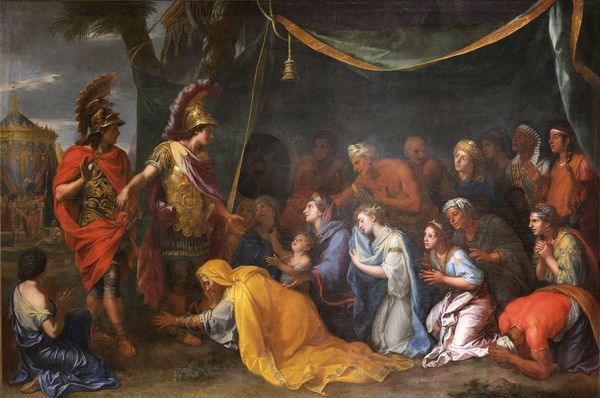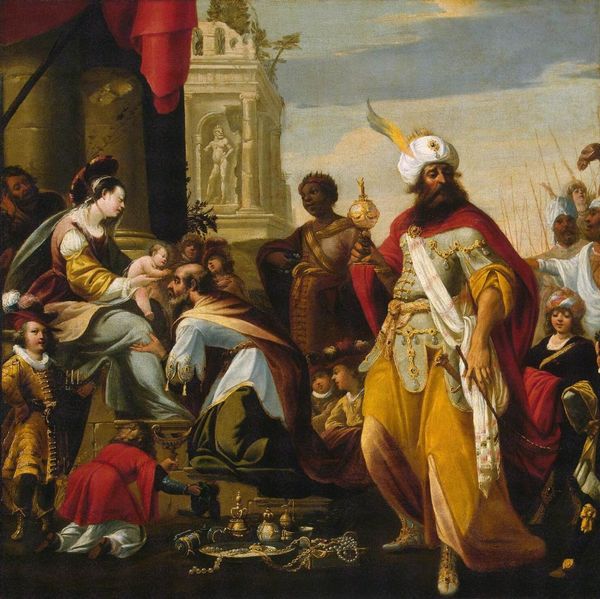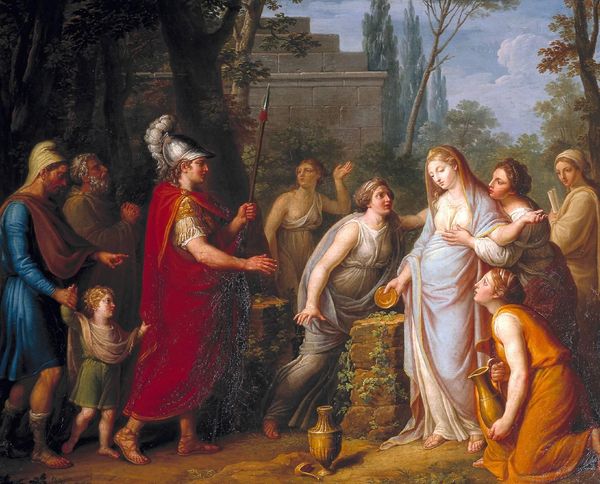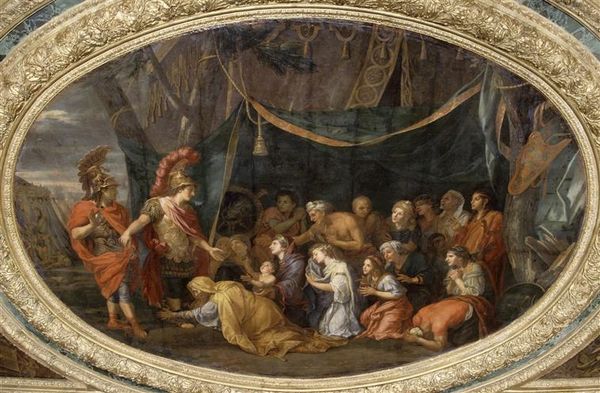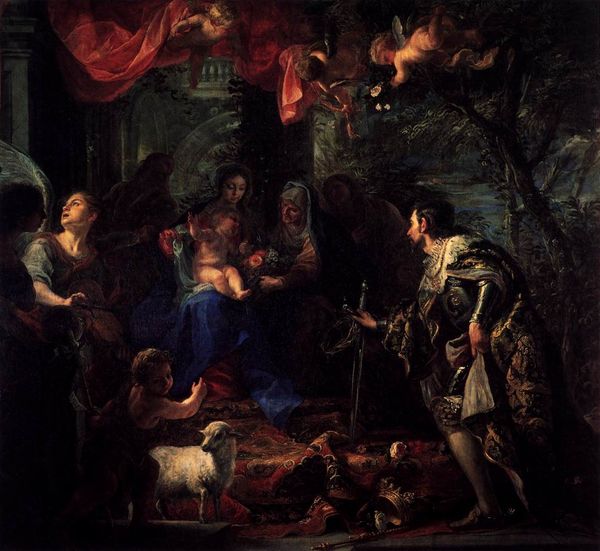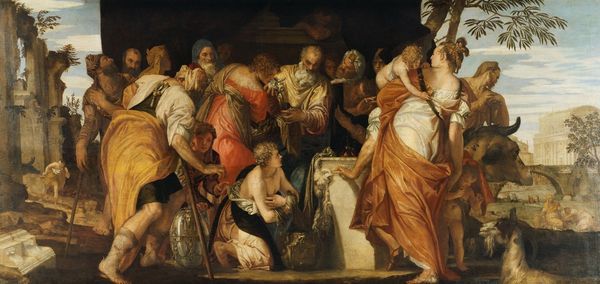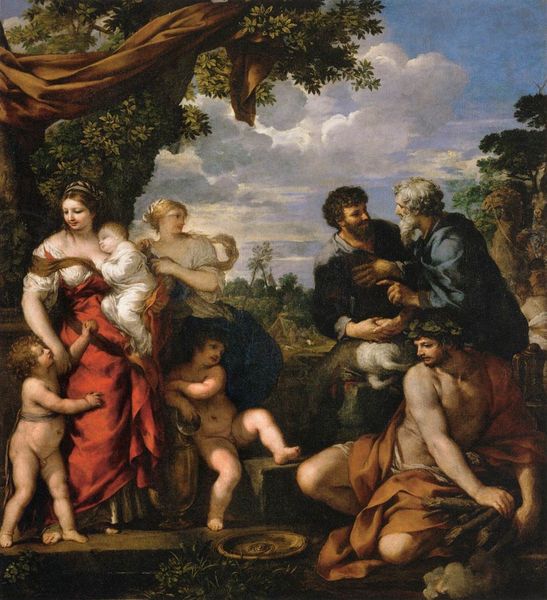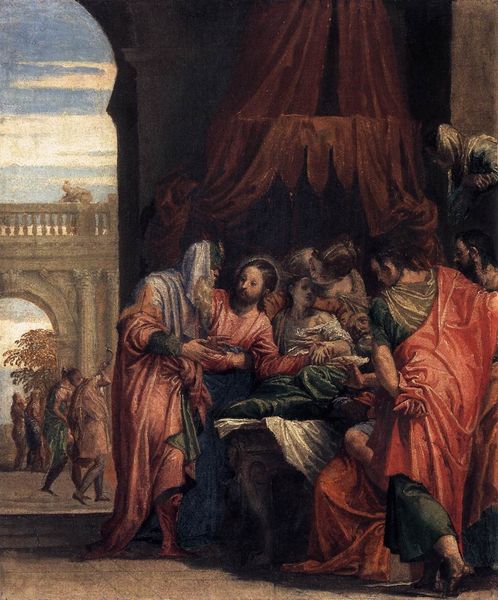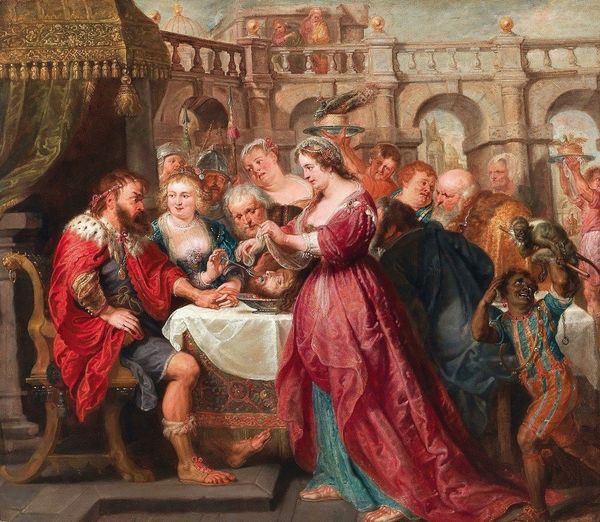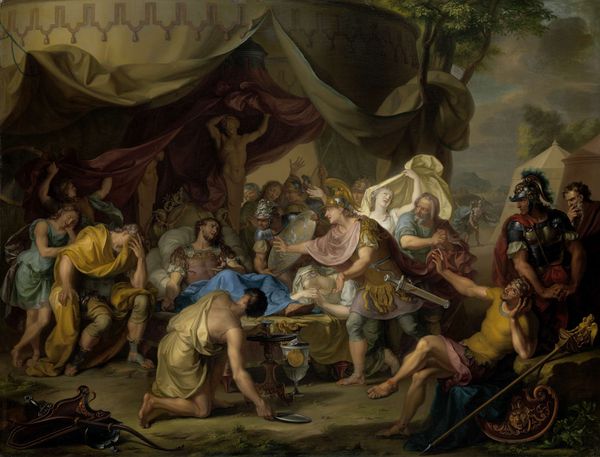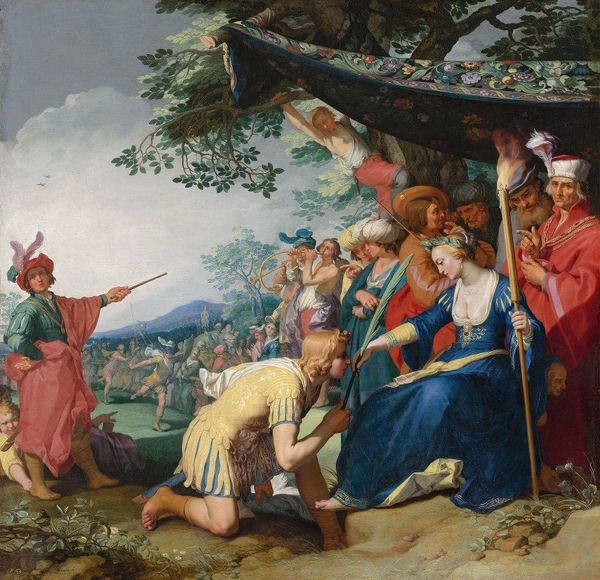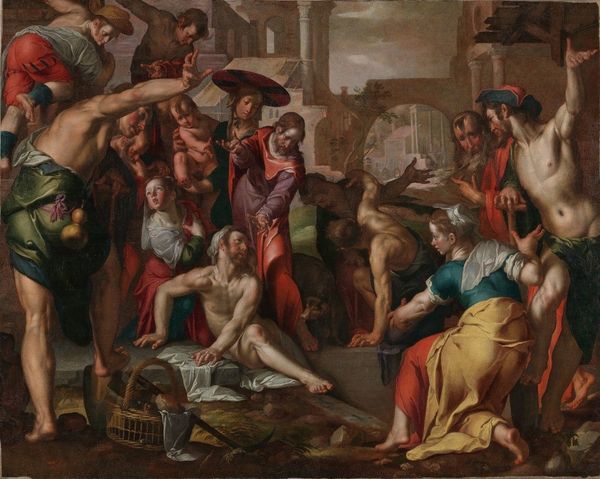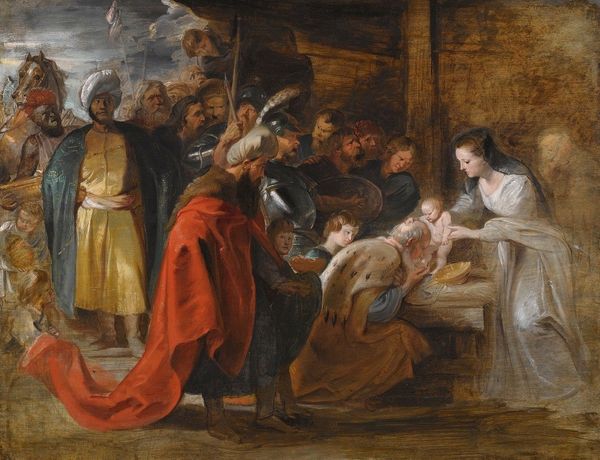
Copyright: Public domain
Curator: This painting before us, rendered in oil on canvas, is "The Wives of Darius before Alexander the Great," completed in 1775 by Pompeo Batoni. It offers a scene plucked straight from history, steeped in the high drama of its time. What's your take as you stand before this tableau? Editor: My first impression? Well, the sheer scale of it is arresting! All those figures crammed together create this sense of claustrophobia, a tangible representation of distress. And the contrast—between the stern conqueror and the supplicating women—it's a loaded visual dynamic. Curator: Loaded indeed. The composition, meticulously crafted, is intended to spotlight Alexander's famed magnanimity. He's shown here receiving Darius's family with grace and respect, despite having just defeated him. A scene of conquering by humanity. Editor: I'm struck by the symbolism embedded within the clothing, or lack thereof. Alexander, fully armored, represents power and war. The disheveled clothing and bare feet of Darius's wives convey vulnerability and defeat. It's a visual language of power dynamics played out in fabric and skin. The image is powerful and full of drama! Curator: Absolutely. This resonates with both the Baroque and Neoclassical influences evident here; that strive for historical accuracy coupled with a penchant for theatricality. Batoni expertly weaves together moral narrative with grand spectacle, designed to edify and inspire. A reflection of the values that the elite classes were thought to embody at this moment. Editor: Thinking about what is "academic" about this art style, to me it embodies a deep cultural memory—visual symbols of power and submission that have been repeated in art throughout history, reflecting unchanging power structures in life. Yet I also feel its constructed artifice; do those "noble" gestures of Alexander really reflect something genuine, or are they staging and performing dominance in another, perhaps more subtle way? Curator: That’s a fair question. The painting’s inherent tensions—between supposed benevolence and actual conquest—make it far from being a simple heroic narrative, isn't it? Its symbolism may be a very complicated picture in many respects. Editor: Right, that dissonance resonates, inviting you to dwell, ponder the subtleties beyond the grand pronouncements! Art continues to reveal what matters in life, doesn’t it?
Comments
No comments
Be the first to comment and join the conversation on the ultimate creative platform.
